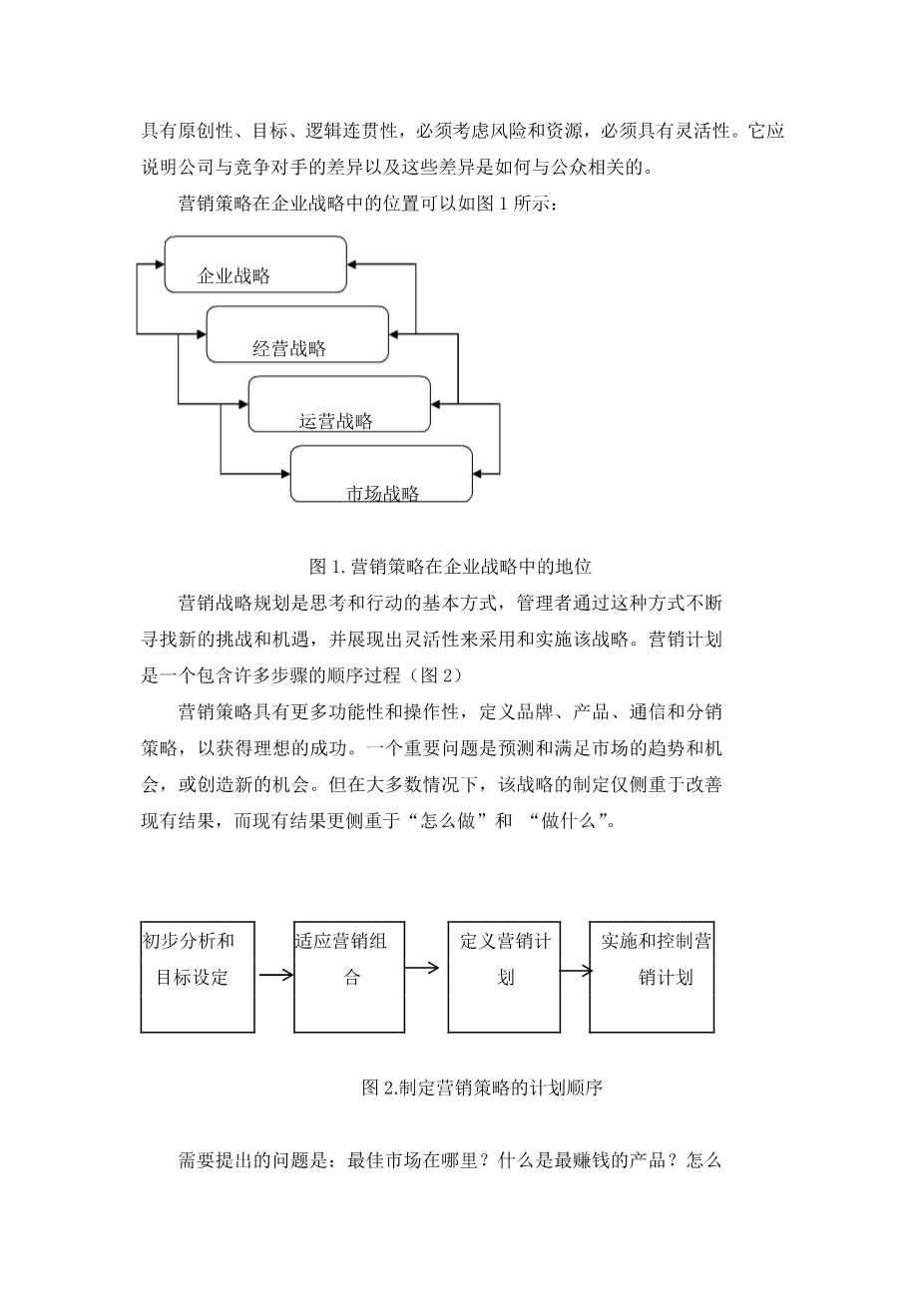附录B 外文原文
THE ROLE OF BRANDING IN MARKETING STRATEGY
PhD candidate Roxana DUMITRIU
University of Craiova
Email: dumitriuroxana@aol.com
Abstract:
In this paper I made a discussion concerning the importance of branding in the strategy of the company. Branding theory and practice evolved in the latest years, being considered a valuable marketing investment. Branding is essential in creating value for the products of a company. Branding is important because it gives meaning to the consumption process. Companies understood that selling without the presence of a strong brand is much more difficult. As a methodology I realized an intersection of the branding and marketing strategy theories. The result is that branding can be regarded as a tool that can enforce all resources of a company towards implementing the strategy.
Keywords marketing strategy, branding, value in marketing
1. Considerations regarding the marketing strategy
The business strategy can be defined as a set of decisions and actions regarding the choice of means and necessary resources to attain the long run objectives of the company, so that the company will get the competitive advantage according to its mission (Nistorescu, 2009, p. 12).
Most of the business strategies are inadequate to the market conditions. They do not relate to the context, they are created inside out and not the other way around. Most business strategies are not willingly to embrace the challenges, to explore new things, to praise creativity. Instead they are focused on the routine tasks. The strategies are not properly fitted with the resources of the company and the changing premises of the markets they are envisioning.
As a consequence, in many cases, the strategies fail to reach their objectives. Strategies serve only as an indication of a possible course of action, but this course is deviated from, because those who are supposed to implement the strategy do not adhere to this goals. Strategies require a long-term vision which is not easy to obtain (Fisk 2008, p. 123).
A vision means to formulate and to project a scenario into the future. This scenario must turn into a reality, so that the vision finds many adherents. A vision is to create and to impose a leadership of the market. But in many cases, companies understand to create so called “strategies” only to focus on short-term. Instead of creating the market, of setting proactive objectives, the strategy establishes objectives that are reactive.
The strategy must be fitted to the values, resources, competences and organizational culture of the organization. A good strategy must have originality, goals, logical coherence, must take into considerations the risks and resources, must have flexibility (Lynch 2006, p.19). It should state how the company differs from its competitors and how theses differences are relevant for the public.
The place of marketing strategy in the corporate strategy can be defined as in the figure 1:
Figure 1. The place of marketing strategy in corporate strategy
Source: adaptated from Huff et al, Strategic Management, Logic and Action 2009, p. 15
The marketing strategic planning is an essential way of thinking and action, through which the managers are constantly looking for new challenges and opportunities and show flexibility in
adopting and implementing the strategy (Barbu 2010, p. 79).
Marketing planning is a sequential process comprising many steps (figure 2).
Figure 2. The sequence of planning in establishing the marketing strategy
Source: Adapted from Sasu 2005, p. 294
The marketing strategy has a more functional and operative character, defining the brands, the products, the communications and distribution strategy, in order to obtain the desired success. One important issue is to anticipate and to meet the trends and opportunities of the markets, or to create new opportunities. But in most cases, the formulation of the strategy is focusing only on improving the existing results, which is focusing more on “how to” then “what to do”.
Questions that need to be asked are: where are the best markets? What are the most profitable products? How to create significance for our products?How to enhance the value of the brand?
The markets are the source of change, the sources of opportunities that companies need to capitalize. The best results can be obtained if the companies are able to track the changes in the environment and to adapt to them.
The companies must orientate from the old paradigm based on “core-competencies” to the new formula of “market-driven competencies”. There is a balance between the two perspectives. The idea is that the position you are starting from defines the framework of the actions to follow (Fisk 2008, p. 125).
The key to formulate and implement a successful strategy is to understand the markets the company operates in. The markets are the complete sources of information regarding possible challenges.
A market strategy has three main dimensions: where to compete? How to compete? and how to win? The answer to the first question is based on a complete analysis of the market potential, so that the companies are able to act only on the most profitable markets. How to compete refers to the operationalization of the marketing strategy: how to best serve the customers, thou enhancing the competitive advantage. How to win refers to finding the best solutions for overcoming the competition (figure 3).
Figure 3. Marketing strategy
Source: Adapted from Fisk 2008, p. 126
Marketing should be the leading force of the business strategy. Marketing deals with the markets and customers. Marketing is about the opportunities of the markets and the resources that are to be used to win the bat
全文共18576字,剩余内容已隐藏,支付完成后下载完整资料


英语译文共 8 页,剩余内容已隐藏,支付完成后下载完整资料
资料编号:[449648],资料为PDF文档或Word文档,PDF文档可免费转换为Word


